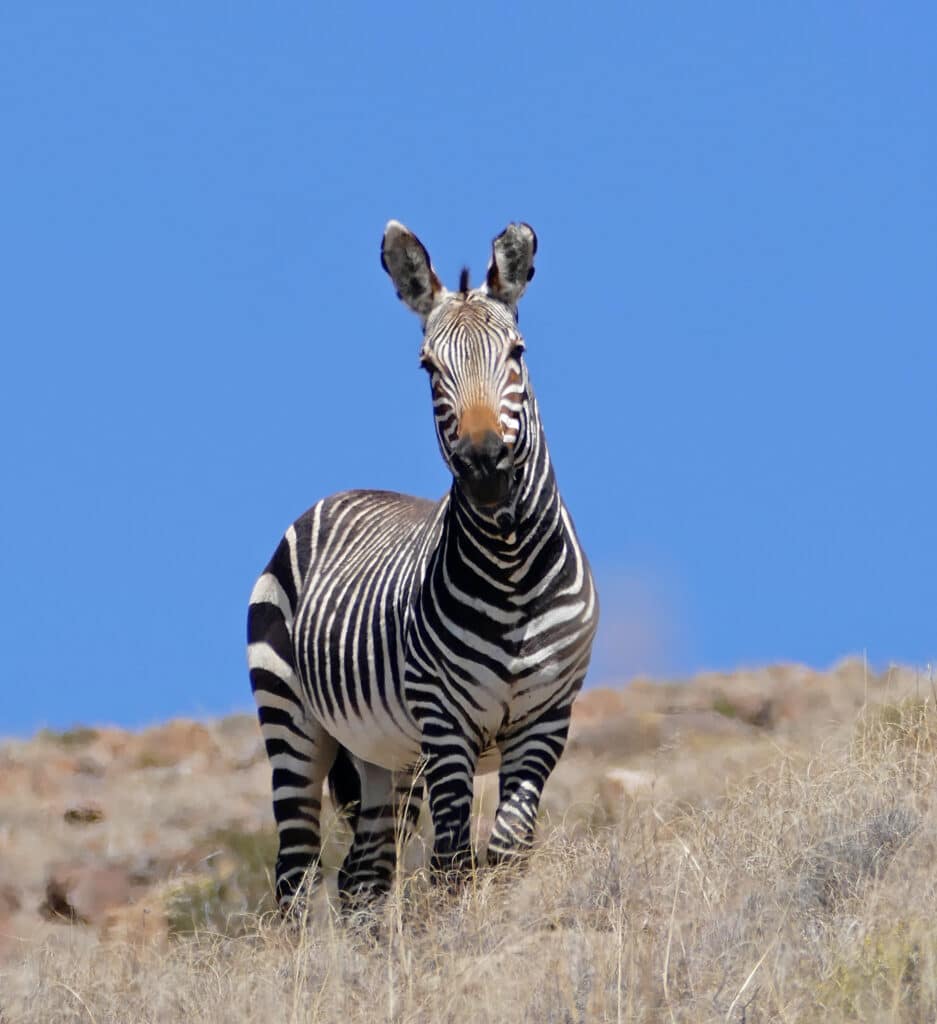Welcome to animals that start with Z.
It may not seem like many animals start with the letter Z, but there are surprising ones.
You can read the entire article or jump to any section.
Overview of Animals That Start With Z
1. Zamurito
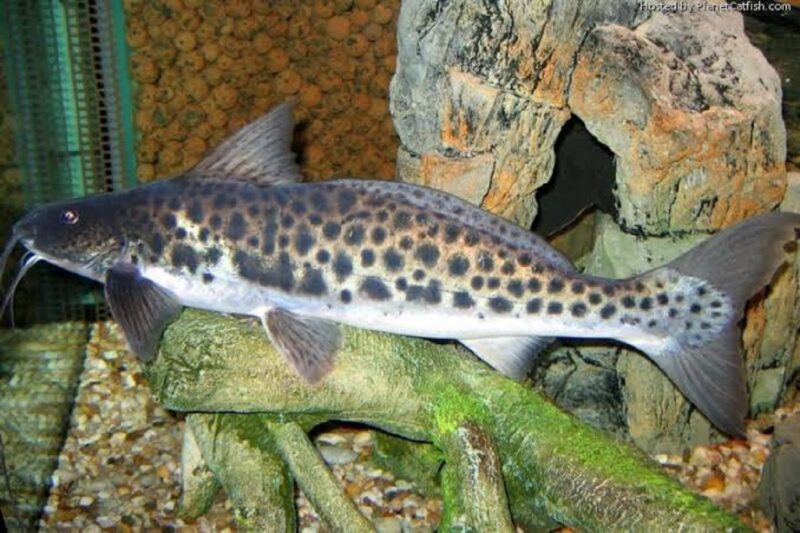
| Scientific Name | Calophysus macropterus |
| Where it Lives | Amazon & Oronico basins |
| What it Eats | Dead matter, small fish |
| Conservation Status | Least concern |
Fun Fact: Zamuritos bite and tear the flesh of other fishes in an aquarium.
Zamuritos are also known as vulture catfishes due to their eating of dead and decaying matter. They reach about 16 inches (40 cm) in length. These fishes are good at adapting and surviving in many different environments, making them good aquarium pets. However, their tankmates should be chosen carefully as zamuritos are an aggressive species.
2. Zapata Rail
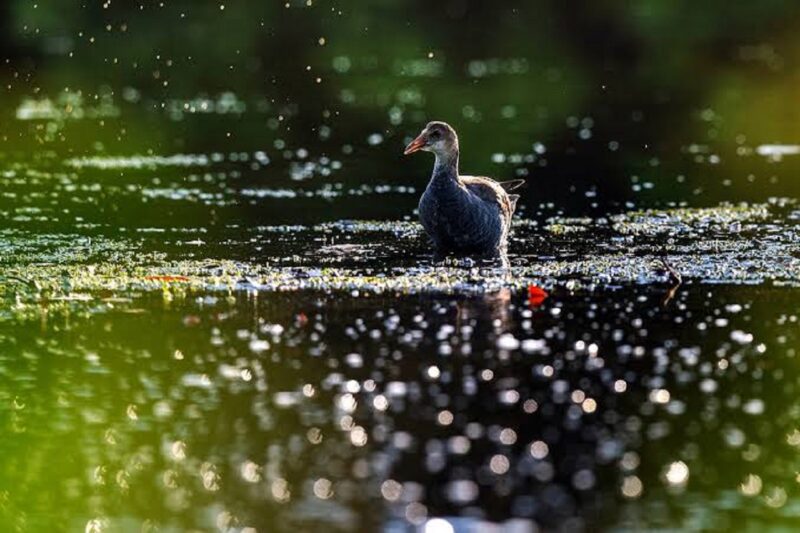
| Scientific Name | Mustelirallus cerverai |
| Where it Lives | Cuba |
| What it Eats | Insects, plant matter |
| Conservation Status | Critically endangered |
Fun Fact: Zapata rails have short wings that cannot fly for long.
Zapata rails can only be found in the Zapata swamps in southern Cuba. These birds have brown bodies, red eyes, and red legs and grow to around 11 inches (29 cm) long. The already small population of Zapata rails is further threatened due to habitat destruction and predation by non-indigenous mammals and catfish.
3. Zapata Wren
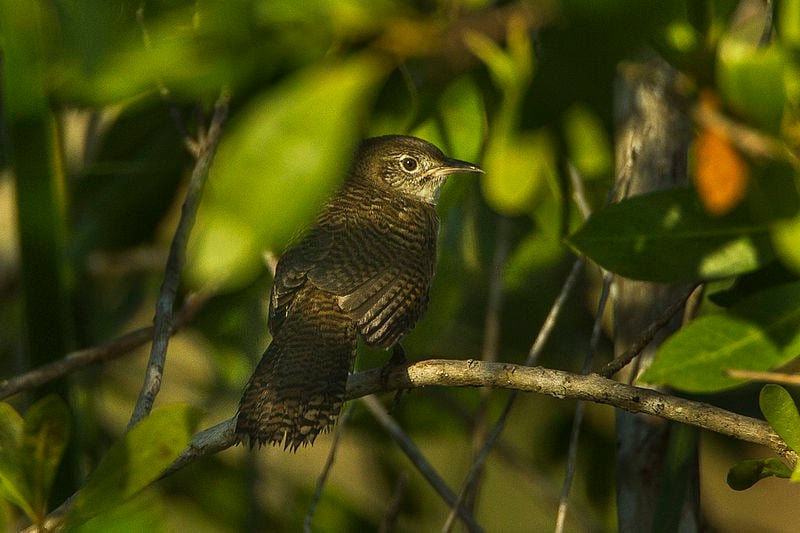
| Scientific Name | Ferminia cerverai |
| Where it Lives | Cuba |
| What it Eats | Insects, spider, lizards, berries |
| Conservation Status | Endangered |
Fun Fact: The Zapata Wren is famous for its strange-sounding song.
Zapata wrens, similarly to Zapata rails, can only be found in the Zapata swamps of southern Cuba. These birds are mostly brown with black stripes and a grayish belly, and they grow up to 6 inches (16 cm) long and measure about six inches in length. They have a loud and musical call. Unfortunately, they are threatened due to habitat destruction and predation.
4. Zebra
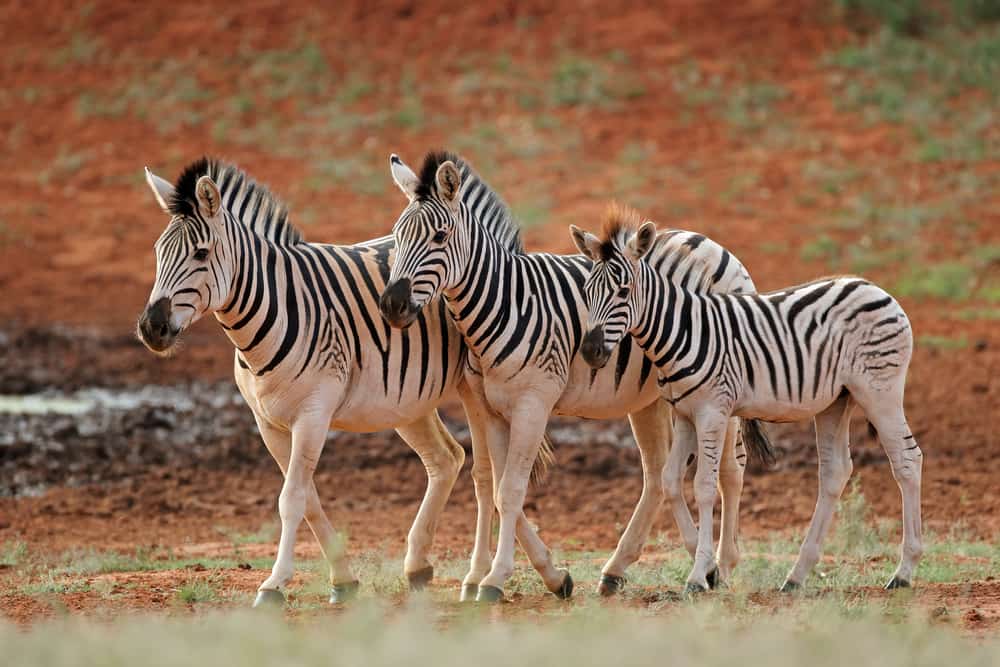
| Scientific Name | Equus zebra |
| Where it Lives | Sub-Saharan Africa |
| What it Eats | Grasses, leaves, bark |
| Conservation Status | Near threatened |
Fun Fact: No two Zebras can have the same pattern of stripes.
Zebras are one of the most recognizable animals with their distinctive black and white-striped fur. There are three living subspecies of zebra, all endemic to Sub-Saharan Africa. At least five subspecies of zebra are now extinct, including the quagga, which was hunted to extinction in the late 19th century. These mammals can reach speeds of 40 miles/h (65 km/h), necessary for them to run away from predators in the open African savannah.
5. Zebra Duiker
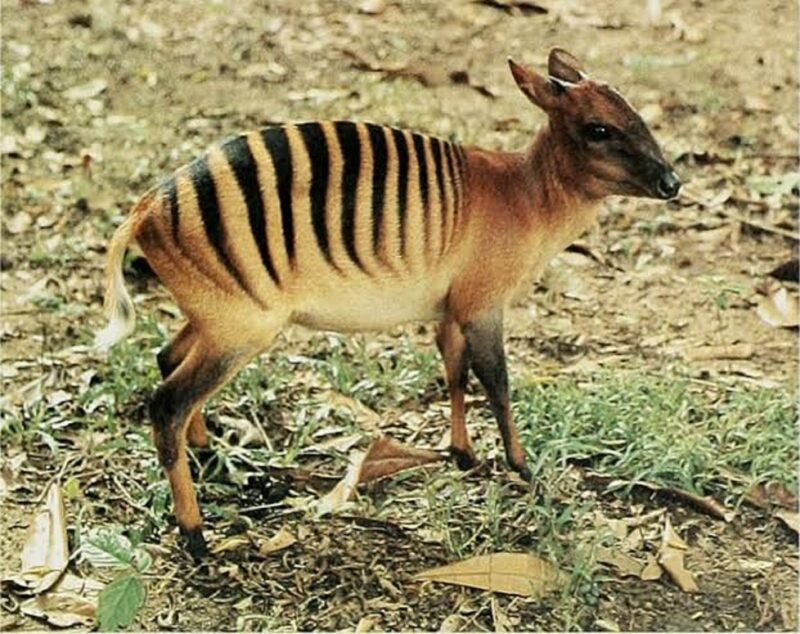
| Scientific Name | Cephalophus zebra |
| Where it Lives | Midwestern Africa |
| What it Eats | Fruit, foliage, seeds |
| Conservation Status | Vulnerable |
Fun Fact: The Zebra duiker is thought to have been one of the earliest duiker species to have evolved.
Zebra duikers have black stripes on their brown and tan coats, reminiscent of zebras’ coats. These mammals are endemic to the West African rainforest and are nocturnal in the wild. The stripes on the duiker’s back may prevent easy detection by predators.
6. Zebra Finch

| Scientific Name | Taeniopygia spp. |
| Where it Lives | Australia, Indonesia |
| What it Eats | Seeds, fruits |
| Conservation Status | Least concern |
Fun Fact: These tiny birds are capable of composing entirely new songs.
Zebra finches include two species, the Sunda zebra finch, located on the Sunda Island of Indonesia, and the Australian zebra finch, located in arid regions of Australia. These birds reach only 4 inches (10 cm) in length. The birds are grey with black-and-white tails, and the males have spotted brown feathers near their wings. They typically exhibit lifelong monogamous bonding.
7. Zebrafish
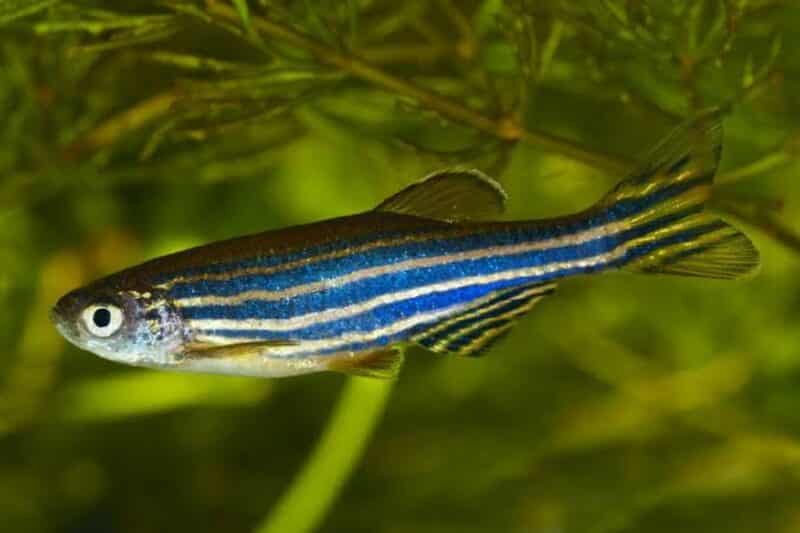
| Scientific Name | Danio rerio |
| Where it Lives | South Asia freshwater |
| What it Eats | Insects, larvae, phytoplankton |
| Conservation Status | Least concern |
Fun Fact: Zebrafish can repair their hearts.
Zebrafish are popular aquarium fish due to their interesting striped scales. They are native to rivers in South Asia, including India, Pakistan, Bangladesh, and Nepal. They are also often used by scientists for laboratory experiments because they share about 70% of their genes with those of humans. Zebrafishes give birth to hundreds of offspring and mature quickly.
8. Zebra Mussels

| Scientific Name | Dreissena polymorpha |
| Where it Lives | Southern Russia, Ukraine |
| What it Eats | Plankton |
| Conservation Status | Least concern |
Fun Fact: Zebra mussels females can lay up to a million eggs annually.
Zebra mussels live in bodies of freshwater worldwide but as an invasive species everywhere except Ukraine and Russia, where they originate from. These mussels usually measure about 1 inch (2.5 cm) long. They use their small size to their advantage, as up to 700,000 mussels have been found living in one square meter.
9. Zebra Pleco

| Scientific Name | Hypancistrus zebra |
| Where it Lives | Xingu River in Brazil |
| What it Eats | Insects, larvae, worms |
| Conservation Status | Critically endangered |
Fun Fact: Zebra plecos have four “whiskers” by their mouths that they use to feel around their environment.
Zebra plecos are covered in black and white stripes, hence their name. They are a freshwater catfish species that are sought-after as aquarium fish due to their unique look. They are, however, endemic to the Xingu River of Brazil. These fish prefer warm water and thrive at temperatures of 79–88 °F (26–31 °C). At its largest, an adult zebra pleco will get about 4 inches (10 cm) long.
10. Zebra Seahorse
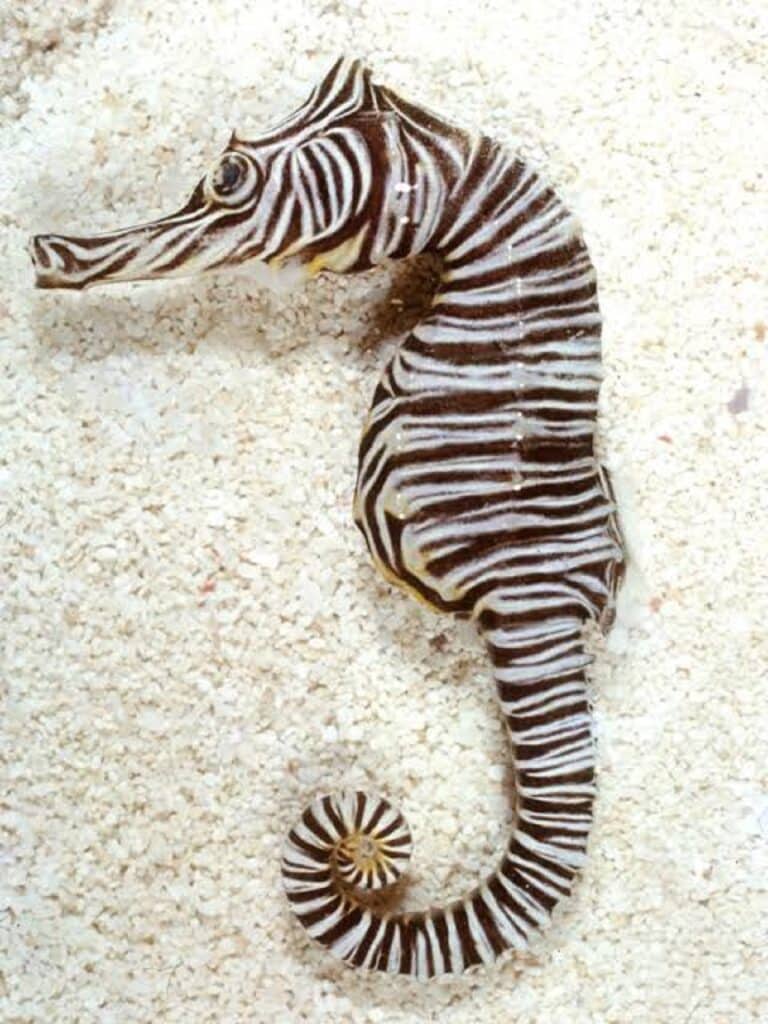
| Scientific Name | Hippocampus zebra |
| Where it Lives | Northern Australia |
| What it Eats | Small crustacean, shrimp, larvae |
| Conservation Status | Data deficient |
Fun Fact: Male zebra seahorses become pregnant and carry their developing embryo in a pouch.
The zebra seahorse is endemic to coral reefs near Australia. They are characterized by the black and white stripes on their skin. The stripes provide these seahorses with camouflage to protect them from predators. There is currently not enough data available on the number of zebra seahorses alive to determine their conservation status.
11. Zebra Shark
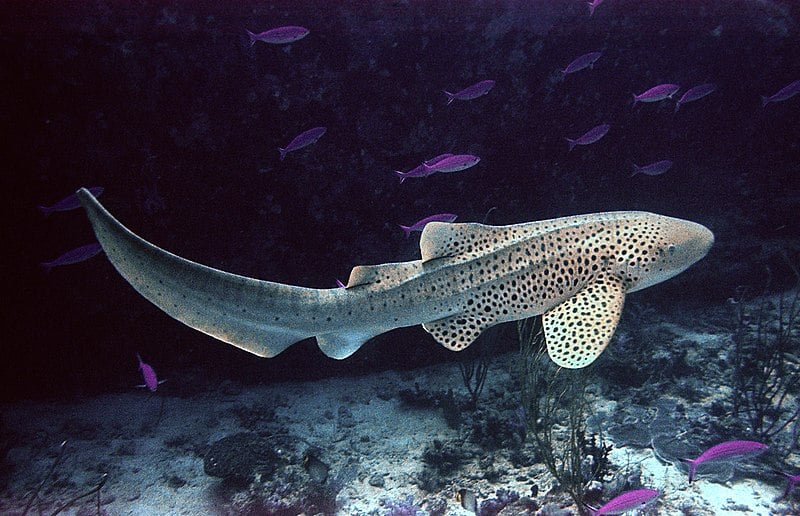
| Scientific Name | Stegostoma tigrinum |
| Where it Lives | Tropical Indo-Pacific Ocean |
| What it Eats | Molluscs, crustacean, bony fishes |
| Conservation Status | Endangered |
Fun Fact: Zebra shark females can reproduce without males.
Zebra sharks are characterized by their spots and can be found around coral reefs and sandy flats in tropical oceans. They can live up to thirty years in the wild and somehow find a way to gather near Queensland every summer.
Young Zebra sharks have stripes, but they become pups as they age.
12. Zebu
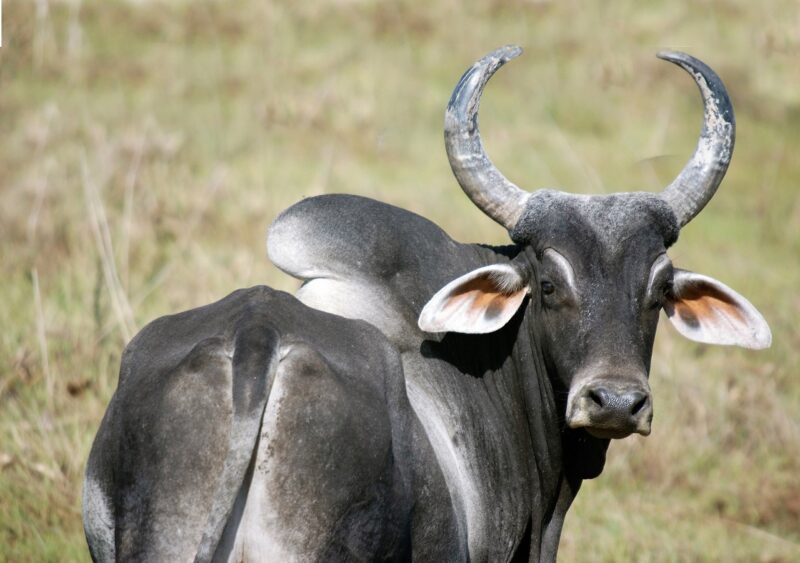
| Scientific Name | Bos taurus indicus |
| Where it Lives | Asia, Africa |
| What it Eats | grasses, legumes, hay |
| Conservation Status | Least concern |
Fun Fact: The Zebu cattle are sacred in many religions, notably Hinduism.
Zebus is a breed of domesticated cattle that originated in South Asia and were domesticated between 6,000 and 7,000 years ago. They are derived from the ancient Indian auroch breed, which became extinct during the Indus Valley civilization age likely due to habitat loss and interbreeding with other cattle species. Zebus are one of the oldest cattle breeds and are easily recognizable by their back hump.
13. Zenaida Dove
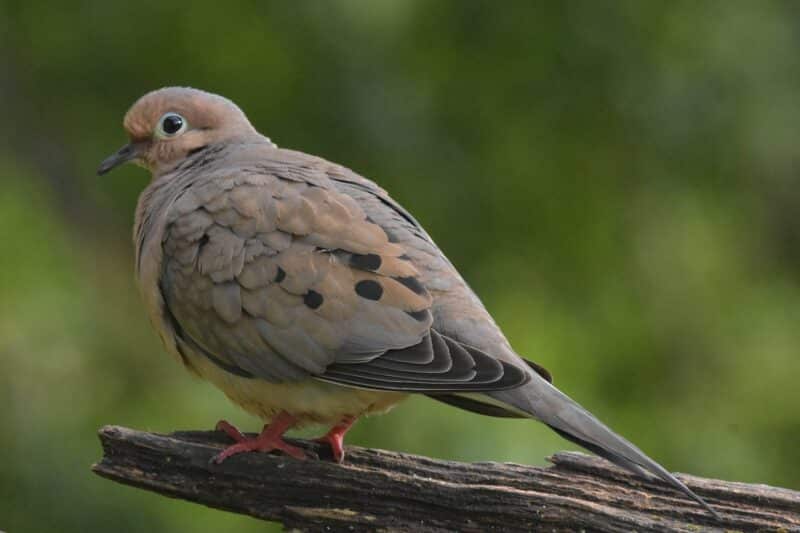
| Scientific Name | Zenaida aurita |
| Where it Lives | Caribbean |
| What it Eats | Grain, seeds, insects |
| Conservation Status | Least concern |
Fun Fact: Young Zenaida doves are developed enough to fly after only two weeks in the nest.
Zenaida doves are tall, brown doves with rounded tail feathers. They breed throughout the Caribbean and at the Yucatán Peninsula. Furthermore, they are the national bird of Anguilla, where they are locally referred to as “turtle doves.” These birds are often hunted by humans as game.
14. Zigzag Eel
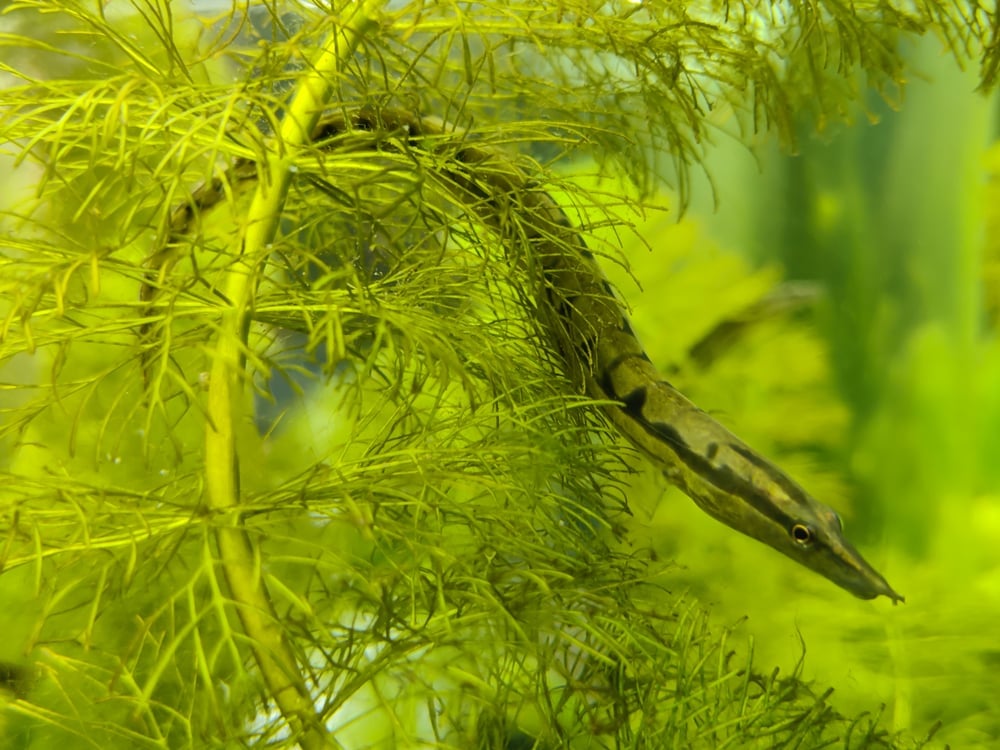
| Scientific Name | Mastacembelus armatus |
| Where it Lives | South Asian rivers |
| What it Eats | Larvae, worms, plankton |
| Conservation Status | Least concern |
Fun Fact: These aggressive fishes are known to attempt jumping out of their aquarium.
Zigzag eels, otherwise known as leopard spiny eels, are a species of ray-finned, spiny fish. They are caught by fisherman as food in their natural habitats, and they are popular aquarium fish. In aquariums, they won’t typically live alongside small fish as they tend to prey on the small fish, even though they don’t often feed on small fish in the wild. They can grow up to 36 inches (91 cm) in the wild, but no more than 20 inches (51 cm) in captivity.
15. Zigzag Heron
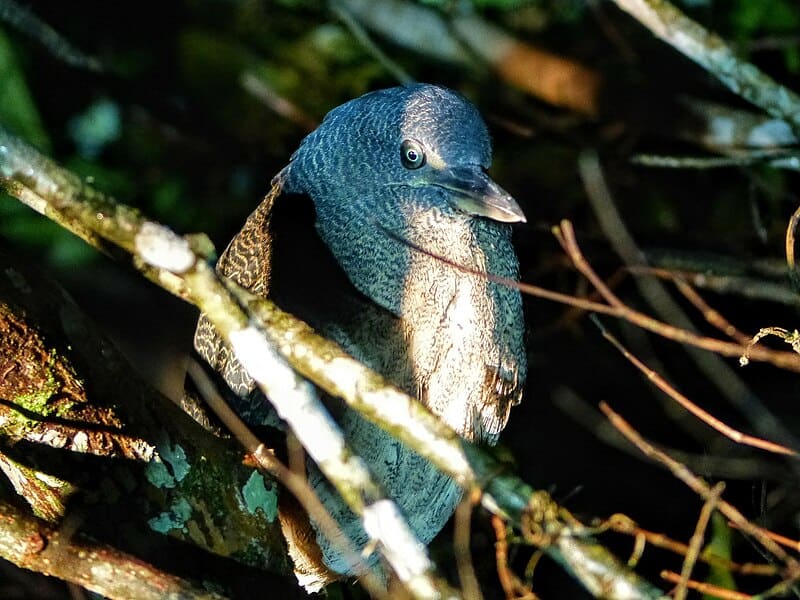
| Scientific Name | Zebrilus undulatus |
| Where it Lives | Amazon |
| What it Eats | fish, reptiles, amphibians, crustaceans |
| Conservation Status | Least concern |
Fun Fact: These birds are reclusive and stay hidden even while foraging.
Zigzag herons are widespread throughout the Amazon basin in South America. These birds have grey feathers marked with a characteristic white zigzag pattern. They grow to around 12.5 inches (32 cm) in height. The genus name “Zebrilus” is derived from a French word meaning “zebra.”
16. Zokor
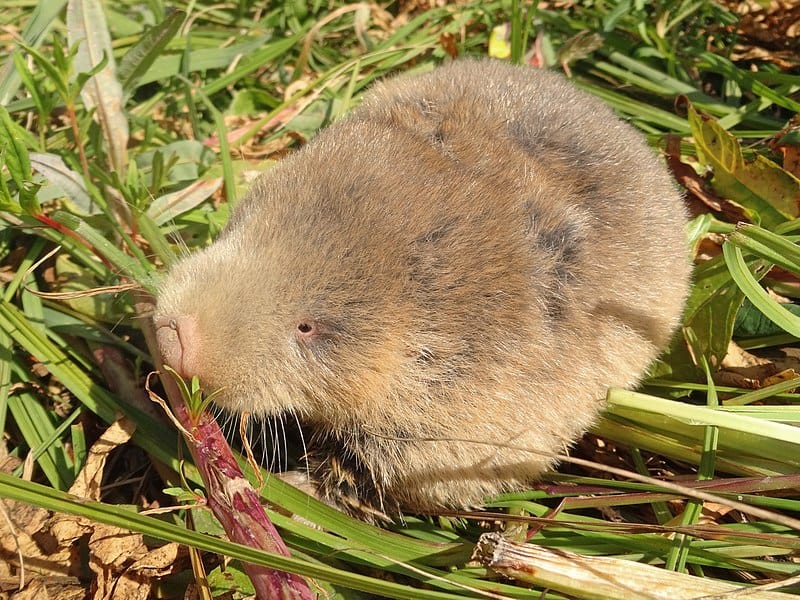
| Scientific Name | Myospalax spp. & Eospalax spp. |
| Where it Lives | China, Kazakhstan, Siberian Russia |
| What it Eats | roots, bulbs, rhizomes |
| Conservation Status | Least concern |
Fun Fact: Zokors don’t have external ears.
Zokors are rodents that can be found in some parts of Asia and Eastern Europe. Zokors look like mole rats and have powerful forearms and long claws for digging through the ground. These animals have a heightened sense of smell and extremely sensitive eyes. Their bones are often made into a product called sailonggu, which is used in some Chinese medicines.
17. Zonkey

| Scientific Name | Equus zebra × Equus asinus |
| Where it Lives | Africa |
| What it Eats | Grass, fruit, vegetables, plants |
| Conservation Status | Least concern |
Fun Fact: Zonkeys, like all hybrids, are sterile, meaning they cannot produce their offspring.
Zonkeys, otherwise known as zebroids, are hybrid offspring of a zebra and a donkey. A pregnancy more often results when the male is a zebra and the female a donkey, rather than the other way around. Zonkeys have been bred since the 19th century. Zonkeys are often born in captivity when zebras and donkeys live near one another; however, there are a few cases of zonkeys being born in the wild.
18. Zorse
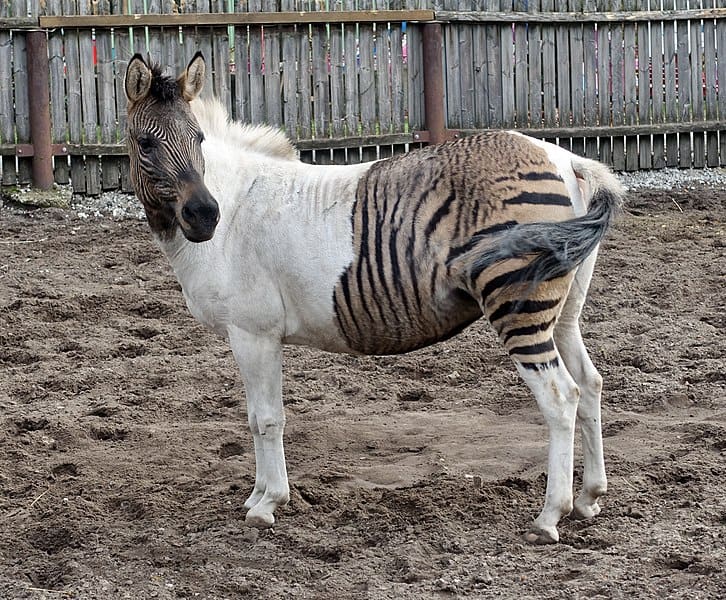
| Scientific Name | Equus zebra × Equus equine |
| Where it Lives | Africa |
| What it Eats | Grass, fruit, vegetables, plants |
| Conservation Status | Least concern |
Fun Fact: Although these animals may occur naturally in the wild, this is rare and you are unlikely to find one.
Zorses are another hybrid zebroid born from crossbreeding a zebra and a horse. Zorses are most often bred using horses whose fur is one solid color. White patches on horses do not contain color pigment; therefore, the zorse offspring may have patches of stripes and patches of solid white color. Zorses are muscular animals with nearly 360-degree vision.
19. Zorilla
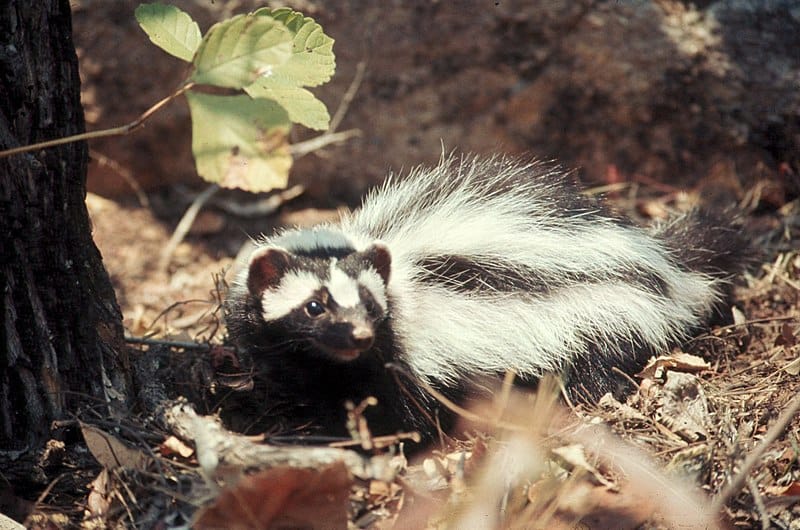
| Scientific Name | Ictonyx striatus |
| Where it Lives | Sub-Saharan Africa |
| What it Eats | Small rodents, snakes, birds |
| Conservation Status | Least concern |
Fun Fact: Zorillas are very aggressive and have to hunt often because their stomachs are small, so they need to feed frequently.
Zorillas, otherwise known as striped polecats, resemble a skunk in appearance. However, genetically, they are closer in relation to weasels. Zorillas grow up to around 24–28 inches (60-70 cm) in length, including their tail. The markings on their fur are thought to serve as warnings to potential predators.
20. Zorro
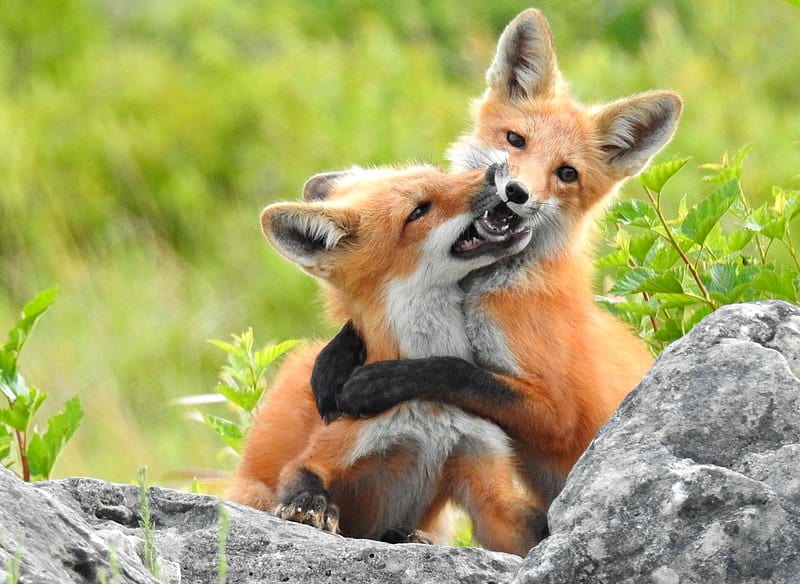
| Scientific Name | 6 genera, 23 species |
| Where it Lives | Worldwide |
| What it Eats | Insects, reptiles, birds, eggs |
| Conservation Status | Some species endangered |
Fun Fact: The collective noun for zorros is referred to as a leash, skulk, or earth.
Zorro is another name for “fox.” All species of zorro belong to the subfamily Caninae. Zorros live on every continent except Antarctica, with the most common species being the red fox (Vulpes vulpes), which is native to North America, Europe, and Asia. Foxes have a range of vocal calls, including whines, yelps, growls, and barks.
Summary of Animals That Start With Z
Animals Names That Start With Z. Source: Youtube, Uploaded: The Animal Planet Channel
And there we have it; animals that start with Z. We hope you enjoyed exploring this list of animals that start with Z, and have a look at some of the others while you are here!
Full Animal Alphabet:
- Animals That Start With A
- Animals That Start With B
- Animals That Start With C
- Animals That Start With D
- Animals That Start With E
- Animals That Start With F
- Animals That Start With G
- Animals That Start With H
- Animals That Start With I
- Animals That Start With J
- Animals That Start With K
- Animals That Start With L
- Animals That Start With M
- Animals That Start With N
- Animals That Start With O
- Animals That Start With P
- Animals That Start With Q
- Animals That Start With R
- Animals That Start With S
- Animals That Start With T
- Animals That Start With U
- Animals That Start With V
- Animals That Start With W
- Animals That Start With X
- Animals That Start With Y
Join our Forum for free today!

- These are The 5 Largest Great White Sharks Ever Recorded - July 19, 2024
- The Surprising Benefits of Big Game Hunting - July 18, 2024
- $100k+ Hunting Experiences The Most Expensive Animals to Pursue - July 17, 2024

